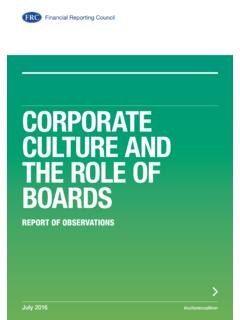Transcription of The globalisation experience and its challenges for the ...
1 BIS Papers No 100 259 The globalisation experience and its challenges for the Philippine economy1 Diwa C Guinigundo2 Abstract This paper analyses the extent and impact of globalisation in the Philippines in terms of trade, finance and migration. In the Philippines, trade globalisation and migration have been more prominent than financial globalisation . While empirical estimates show that globalisation has positively affected the country s economic growth and employment, substantial evidence for its impact on inequality and poverty has yet to be found, as preliminary estimates show mixed results. There are both winners and losers among industries and in the labour market.
2 Thus, more inclusive policies could potentially help cushion the negative consequences of globalisation and facilitate adjustments to narrow the gap between winners and losers. Towards this end, the Bangko Sentral ng Pilipinas has made contributions primarily through its focus on low and stable inflation; the facilitation of greater financial inclusion; and greater involvement in global cooperation efforts to further strengthen rule-based international transactions. Keywords: impact of globalisation , challenges of globalisation , policy response to globalisation , migration, remittances, financial inclusion, Philippines.
3 JEL classification: F6, F62, F63, F66, F68, F22, F24. 1 A paper prepared for the Bank for International Settlements (BIS) Emerging Markets Deputy Governors Meeting, 8 9 February 2018, Basel, Switzerland. The usual institutional disclaimer applies. 2 Deputy Governor, Monetary Stability Sector, Bangko Sentral ng Pilipinas 260 BIS Papers No 100 is defined as the mobility across borders of goods and services, people, capital and knowledge (BIS (2017a)). In the past half century, the world economy has become much more integrated, interdependent and intertwined as globalisation and liberalisation appear to have become an inevitable and irreversible trend.
4 Regional trading arrangements, the removal of restrictions on the flow of trade and investment, and rapid technological changes have led to the deepening of economic integration and the heightening of globalisation (Aldaba (2011)). Emerging market economies (EMEs) have also become much more tightly integrated in terms of trade, finance, global value chains (GVCs) and migration (BIS (2017b)). Some have attributed an unprecedented period of peace and prosperity to globalisation as it has spurred growth and productivity as well as expanding opportunities for businesses, investors and workers (Ibrahim (2017)).
5 This is true particularly for EMEs, where many observers consider globalisation as a major cause of strong growth and significant poverty reduction in recent decades (BIS (2017b)). However, due to the adverse and lingering impact of the Great financial Crisis (GFC), there has been a growing backlash against globalisation , not only in EMEs but also in advanced economies, particularly in the United Kingdom and the United States. A pattern of resurgent protectionism is observed to be emerging across the globe and inward-looking policies are getting more support. This paper analyses how globalisation has affected the Philippines, starting with globalisation trends in the country (Section 2), and followed by macroeconomic and distributional consequences of globalisation (Section 3).
6 The paper continues with a discussion on challenges that the country faces with greater world integration (Section 4), and finally with a discussion of policies in the last section (Section 5). 2. globalisation trends in the PhilippinesThe Philippine economy, like that of most other EMEs, has become increasingly integrated with the global economy. This is evident in the general increase in trade in goods and labour migration. There is also greater integration in finance, albeit at a relatively moderate pace. Trade openness From the 1990s to the 2000s, trade openness in the Philippines improved from to of the country s gross domestic product (GDP) (Graph 1).
7 Contributing to this increase were the country s efforts towards a more open trade policy starting in the 1980s. This trade openness also reflected declining transport costs and improved information and communications technology that supported the development of complex GVCs, particularly in electronics and electrical components, allowing companies to manage their production more efficiently (Dudley (2017)). BIS Papers No 100 261 Economic globalisation indicators (% of GDP), 1990s, 2000s, 2010s Graph 1 Note: Trade openness = [(Exports of goods and services + Imports of goods and services)/Real GDP] x 100; financial openness = [(Inflows of direct investment, portfolio investment, financial derivatives and other investment + Outflows of direct investment, portfolio investment, financial derivatives and other investment)/Nominal GDP] x 100.
8 Figures from 1990 to 1999 were based on BOP Old Concept. Figures from 2000 to 2004 were based on BPM5. Figures from 2005 to 2017 were based on BPM6. 2010s include January to September 2017 data for financial openness and January to December 2017 data for trade openness . Estimates exclude valuation changes. The analysis, however, should be taken with caution considering the break in the data series used (old, BPM5 and BPM6 concepts). Sources: National Accounts, Philippines Statistics Authority; BOP Statistics and International Investment Position, Bangko Sentral ng Pilipinas. Another factor is rapid growth in the information and communications technology-business process outsourcing (ICT-BPO) services in the country.
9 Based on data on earnings from IT-BPO, the industry recorded above 50% annual growth from 2006 to 2008, this growth remaining in double digits until 2016. The Philippines has also established itself as one of the two major BPO industry centres in Asia, along with India. With the country s continued openness to globalisation , the total trade of the Philippines increased further, to of GDP in the 2010s (Graph 1). The pickup in global trade starting in 2017 has, in fact, helped in offsetting the weak global demand that lingered after the GFC. financial openness In terms of financial openness , globalisation came in at a more moderate pace. The country s total capital flows increased from of GDP in the 1990s to of GDP in the 2000s (Figure 1).
10 While the Philippines started to liberalise the foreign exchange (FX) regulatory system in the 1990s, capital inflows were dampened by the Tequila (Mexican peso) financial crisis in 1995 and the Asian financial crisis in 1997 98 (Tetangco (2005)). In the 2010s, however, total capital flows rose to of GDP. This could be attributed in part to the nine waves of FX liberalisation reforms undertaken by the BSP starting in 2007. Another important reform undertaken to promote financial openness was the further liberalisation of foreign bank entry in 2014. Notwithstanding this, the average ratio of capital flows to GDP from 2010 to the 262 BIS Papers No 100 first three quarters of 2017 indicates that there is still scope for the country to liberalise The composition of the economy s external liabilities has shown its increasing exposure to both portfolio and direct investments, signifying not merely foreign investors search for yield but growing confidence in the country s macroeconomic fundamentals (Graph 2).












